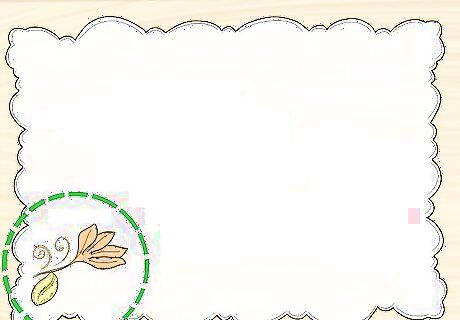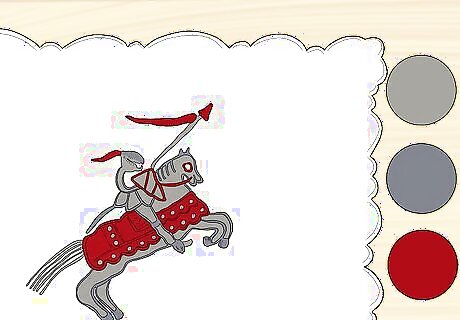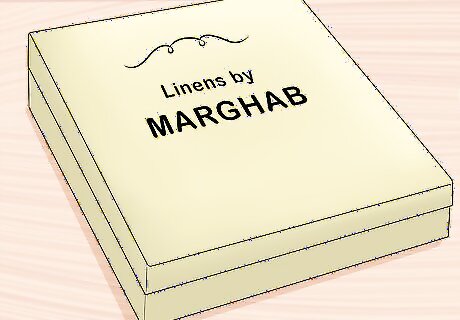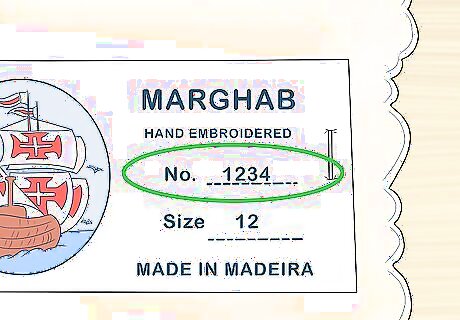
views
Testing the Fabric

Squeeze the fabric to test its heaviness. A good piece of linen has more body than other fabrics. If it is linen, it will feel solid in your hand and weigh more than a piece of cotton. When you squeeze it, it will spring back into shape but have a wrinkle on it. Cotton flattens out when you squeeze it. Synthetic fibers retain their shape but feel limp. Some cotton is manufactured to feel heavier, so check the item’s other features.

Touch the fabric to see if it feels smooth and cool. Linen absorbs water from the environment, so it always feels cool to the touch and slightly damp. Cotton can also feel this way, but it feels rough due to tiny yarn fibers sticking up. Linen is well-known for feeling much more luxurious to the touch as well. Synthetic fibers resist moisture, so they feel like the same temperature as the room you are in.

Inspect the linen for thicker fibers. Take a close look at the fabric to see if you can spot differently-sized threads. Linen has “slubs,” or thicker threads woven in between the thinner threads. These fibers will appear long, straight, and glossy. Other fabrics do not have these fibers. The fibers of other fabrics will all appear to be of an identical length and thickness.

Check that the fabric is white or evenly dyed. Linen is hard to dye, so most linen is bright white. However, some items, including vintage Marghab linen, can be dyed. The dyes are typically light colors, such as a very pale red or gray, which make the linen look off-white. In a quality piece of linen, the coloring appears uniform and consistent. If the dye is poorly done, the linen may have yellow spots or holes in the threading. Cotton and other fabric can come in a large variety of colors.

Moisten the fabric to check for quick absorbency. Dampen your finger in clean water, then press it against the fabric. Linen absorbs water, so the moisture will pass right through to the other side. The water takes a lot longer to reach the other side in cotton and other fabrics.

Wash the fabric to see if it stiffens, then softens. The plant fibers in the linen stiffen after washing. Quality Madeira linen will retain its shape. Once the fabric dries, it begins softening again. With repeated washings, it can actually become softer than a new piece of linen. Other fabrics and low-quality fakes lose shape after repeated washings and gradually feel lighter.

Iron the dry fabric to see if it retains its wrinkles. Dry the fabric first, then test with an iron on a medium heat setting. Linens generally resist ironing, so any wrinkles in the fabric may not come out right away. Cotton and other fabrics will flatten out when ironing. Ironing linen while it is damp helps press out the wrinkles.
Spotting Vintage Embroidered Designs

Look for embroidered designs in 1 corner of the linen. Vintage linens often feature ordinary themes, such as fruit and flowers. Although the subject matter may seem plain, the designs are very detailed. Each design stands out, but to avoid hiding the quality of the fabric, it usually does not cover the entire linen. Many designs are embroidered in 1 corner, although some can span across the linen. Be wary of cheap-looking fabric, dull colors, and a lack of details. Also avoid cutout designs, as these are usually fakes.

Check the embroidery for individual stitching. Vintage Madeira linens are highly-detailed, so take a close look at the design work. You may be able to notice the varying thread thickness. The design embroidered on it should also appear sharp and colorful. Also pay attention to any special details like flower petals. For example, a flower will have individual petals. A fish will have thread dots for scales. Scallops on borders are all individually stitched.

Notice asymmetrical details in the print. Images embroidered on the linens tend to be distinct, featuring details like differently-sized tree branches or birds in different poses. Varying design details can be a sign of authenticity. These designs should look high-quality and stand out from the plainly-colored background. Madeira pieces may have the same design, but vary slightly due to being handmade. For example, a Marghab design may feature several highly-detailed flowers of different sizes.

Watch for soft and unique color schemes. Madeira linens, especially the Marghab brand, were often made with unique color pairings. The colors often look warm and soft, utilizing light shades of light red, green, or yellow. The quality of the linen and embroidery should be visible instead of hidden under bright colors. In addition to white, the linens may also be an off-white color such as a very light red or gray. Some designs have multiple color palettes. For example, an identical horse design may be red on 1 item and yellow on another.
Researching the Authenticity

Inspect the box the linen came in if you have it. If the linen is still in its original box, you may be able to figure out the manufacturer’s name. It will be printed on the box. If you do not recognize the company, you can search online for information about the linen products they have made. Unfortunately, many pieces of vintage linen were not stored in the original packaging. Be wary of reused boxes or fake labels. Test the linen and do research to make sure.

Look for a small tag on the linen. Even vintage Madeira linen came with a tag proving its authenticity. You may see a metal or paper tag. The metal tag is small, rounded, and lettered. The paper tags are pinned to the linens and have the company name printed on them. Unfortunately, the tags are often pinned onto the linen instead of sewn on, so your item may not be tagged. The metal tags are called Gremio tags and have the letter G printed on them. For example, on a paper tag you might see a company name, such as “Marghab,” a print number, and a size number.

Read the print number on the tag. Some of the Madeira manufacturers, particularly vintage brands like Marghab, created thousands of different designs. If the linen has a tag, it may tell you which embroidered pattern, or “print,” the manufacturer chose. You can use this information to gauge its authenticity. The print number can be used to compare your item to other linens made with the same embroidery pattern.

Search for the print design online. Type the company name and print number into an online search engine. You might be able to find some pictures or a database depicting the design. Then, you can compare that to the linen you have to ensure its authenticity.

Bring linen to a tailor for help identifying it. Any tailor or craft shop can help you figure out if the fabric is linen. Many of them can help estimate when and where the linen was made. Collectors and some art historians who specialize in textiles may also be able to help. The South Dakota Art Museum has the most complete collection of Marghab linens, so you may be able to contact them online for identification assistance. If you need to verify vintage linen, try an auction house. Choose one that frequently sells fabric.




















Comments
0 comment